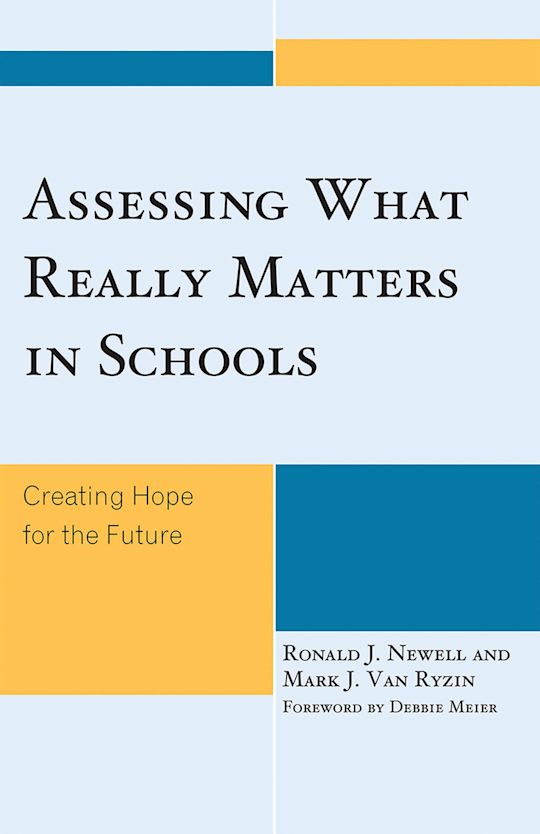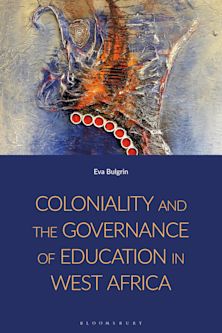- Home
- ACADEMIC
- Education
- Education Policy and Politics
- Assessing What Really Matters in Schools
Assessing What Really Matters in Schools
Creating Hope for the Future
Assessing What Really Matters in Schools
Creating Hope for the Future
This product is usually dispatched within 1 week
- Delivery and returns info
-
Free CA delivery on orders $40 or over
You must sign in to add this item to your wishlist. Please sign in or create an account
Description
Since the 1960s, efforts to reform education-including various curricular changes, reading approaches, teacher preparation, money for the disadvantaged, and different instructional approaches-have failed to bring about true systemic change because the reforms fail to deal with a different definition of learning.
The Hope Study was created to discover whether a radically different learning environment would achieve different outcomes.
In detailing the outcome of the Hope Study, Assessing What Really Matters in Schools gives hope to innovative and progressive schools, to new and different accountability systems, while changing the conversation from an achievement discourse to a human development discourse.
Table of Contents
Chapter 2 What Is Learning
Chapter 3 Schools of Hope
Chapter 4 The Research
Chapter 5 A Good Stage/Environment Fit for Adolescents
Chapter 6 Results of the Study
Chapter 7 Why EdVisions Schools Obtain Positive Results
Chapter 8 Using the Hope Study for School Improvement
Chapter 9 Afterword: Rigor Redefined
Product details
| Published | Jan 16 2009 |
|---|---|
| Format | Hardback |
| Edition | 1st |
| Extent | 128 |
| ISBN | 9781578869688 |
| Imprint | R&L Education |
| Dimensions | 228 x 149 mm |
| Publisher | Bloomsbury Publishing |
About the contributors
Reviews
-
To achieve authentic academic success for more students, we need schools that are developed around adolescent needs and interests in belonging, being competent, and being responsibly free. Here is such a powerful, insightful perspective.
Walter Enloe, coauthor of Project Circles and Learning Circles and former lead teacher and principal of the Paideia School and Hiroshima International School
-
This book offers a rare combination?a fresh perspective on student learning, a serious effort to measure success, and a practical way to inform discussions about schools as a learning environments. The authors conceptualize rigorous learning as the outcome of an environment that promotes positive youth development, not changes in course offerings or testing requirements. They champion the idea that students should be at the center of their own learning agenda and that overall success in life requires educating the whole child. This has led them to create and study schools that test an important idea ? that academic rigor comes from students establishing positive relationships with others and having opportunities to face personally relevant challenges.The Hope Study demonstrates what can happen when pioneering educators partner with researchers to go beyond their intuitive understandings to better understand what helps learners. The result is fascinating portrait of schools where students tackle real-world challenges in the context of supportive relationships with others. One comes away convinced that it is a mistake to ignore the social and emotional needs of students (and teachers), or to underestimate what young people can do when given appropriate
Jason Ravitz, research director of the Buck Institute for Education in California
-
This book offers a rare combination-a fresh perspective on student learning, a serious effort to measure success, and a practical way to inform discussions about schools as a learning environments. The authors conceptualize rigorous learning as the outcome of an environment that promotes positive youth development, not changes in course offerings or testing requirements. They champion the idea that students should be at the center of their own learning agenda and that overall success in life requires educating the whole child. This has led them to create and study schools that test an important idea – that academic rigor comes from students establishing positive relationships with others and having opportunities to face personally relevant challenges.
The Hope Study demonstrates what can happen when pioneering educators partner with researchers to go beyond their intuitive understandings to better understand what helps learners. The result is fascinating portrait of schools where students tackle real-world challenges in the context of supportive relationships with others. One comes away convinced that it is a mistake to ignore the social and emotional needs of students (and teachers), or to underestimate what young people can do when given appropriate opportunities and support. One hopes that educators and educational researchers who are serious about students' overall well-being and long term needs will have a chance to consider the ideas in this book.Jason Ravitz, research director of the Buck Institute for Education in California


































